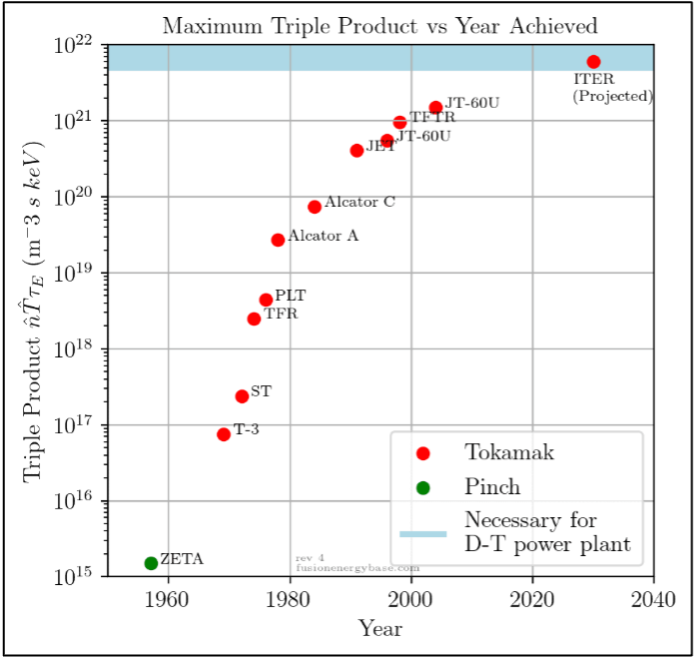How long will fusion take to get here? That’s the question people have been asking for the better part of seventy years. This is a question ECG fields regularly, so I’ll take a few minutes to outline my views on fusion’s “timeline.”
For context, the traditional answer to this question came from physicists and engineers who sought funding from government programs. In the 1940’s and 1950’s when fusion was first being researched, scientists gave the “thirty years” timeline because it was just short enough to be viewed as potentially relevant and long enough to acknowledge that, excluding theoretical work, almost every aspect of fusion was unstudied. When ITER was conceived of in the late 1980’s, scientists falsely assumed that progress towards net energy would continue at the same rate, despite recognizing the only solution to their issues at the time were exponential increases in pre-existing device sizes.

These overly optimistic predictions lead to the often-used quips “fusion will always be the technology of the future” and “fusion is thirty years away and always will be” which have only helped to discredit fusion in the eyes of the public. ECG wants to reframe this question of “when fusion” to ask more productive questions about what progress has been made and what must be done to bring fusion to the commercial power markets. Personally, I hesitate to ascribe deadlines to fusion development because not all progress is linear and the benefits of readily available fusion power will always be worth pursuing. With that acknowledged, at ECG we believe the viability of fusion power will be demonstrated within the coming decade due to advancements in computational methods, magnet technology, manufacturing, and the theoretical understanding of plasma.
In terms of fusion’s progress towards commercialization, I see private fusion companies organized into three phases of development. Many companies are still pursuing purely theoretical research; some companies have small devices and are working through physics challenges that come with scaling their device; some companies are just focused on overcoming engineering constraints. The various approaches to fusion development make providing an end date virtually impossible. Some technologies have well explained physical phenomena but large engineering challenges while some are more difficult to explain scientifically yet have significantly easier construction requirements. Consequently, ECG fundamentally believes that every path towards making fusion power available should be pursued.
Regardless of the technologies that eventually succeed, fusion remains in the unique position of being able to offer a dense, reliable green source of energy that has minimal environmental impacts. Currently, no other source of energy has these characteristics. In the face of climate change, this fact alone necessitates focused research on achieving net positive as fast as possible.
Furthermore, the potential benefits of fusion will become more numerous and impactful as climate change worsens. Looking towards the middle of the century, even if humanity successfully transitions to a green economy relying only on hydro, wind, solar, carbon capture, electric storage, and nuclear fission, fusion energy will always remain a clean solution. Conversely, if humanity finds that they are unable to meet our climate goals, the rapid implementation of fusion energy will become even more important. Fusion plants will be able to help lessen many growing social constraints ranging from meeting the growing electricity needs to providing desalinated water to creating heat for manufacturing.
In short, if fusion energy comes in five, ten, thirty, or fifty years, it will always be a welcome addition to our green technology solutions.
About the Author: Wally Johnston is Co-founder of Energy for the Common Good. He has been working to clear the path for fusion energy to satisfy the world’s power needs soon enough to make a difference.
